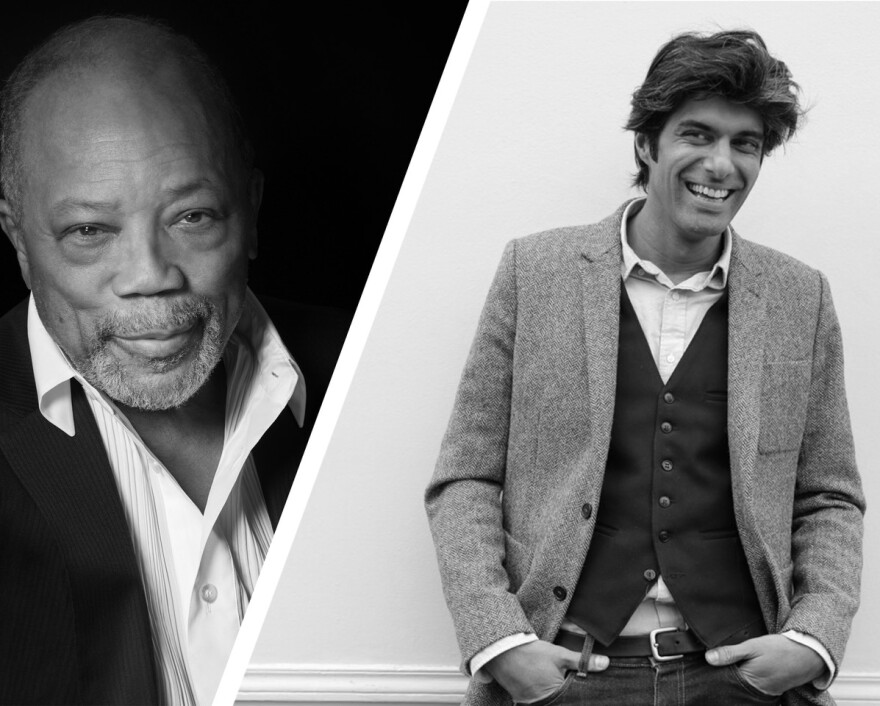What to make of Quincy Jones's new video music service?
Logging on to Qwest TV, the subscription on-demand platform dedicated to “jazz and beyond,” is a bit like entering a virtual boutique record shop in a foreign land. If you’re a jazz fan, or just drawn to the music of the African diaspora, you’ll find a bunch of familiar names in unfamiliar contexts: “Charles Lloyd & Jason Moran Duo Live at Jazz sous les Pommiers” or "Toots Thielesmans Musicalmente con TV show.”
The initial impression is equal parts alluring and disorienting, a reminder that there’s so much incredible music out there waiting to be discovered — maybe even masterpieces by famous artists that aficionados don’t know about. A platform like this has the potential to unlock secrets to this music, and provide a deeper understanding of legendary artists at their peak.

So the daunting task of Qwest TV is that of a master curator: to pull gems from the rough, weeding through hundreds of hours of concert footage, mostly from overseas. Reza Ackbaraly, who founded the venture with Quincy Jones, equates his job to that of a crate-digger in pursuit of rare vinyl. “Because Qwest TV is 100 percent legal,” Ackbaraly says, “it’s not digging on YouTube, it’s digging into real archives from record companies, from TV channels. Radio Switzerland, and Italy television, Belgium television and Swedish television.”
What’s immediately distinctive about the Qwest TV experience is the hi-resolution video combined with well-mixed, high-end audio — a stark contrast to what we’re accustomed to seeing on YouTube, which is often questionable in meeting legal requirements.

My attention was immediately drawn toward vintage concert performances: a mesmerizing performance by an experimental-electro Wayne Shorter band from 1987; an invigorated solo improvisation by a youthful Bobby McFerrin in 1985; and also from ’85, a glistening Sun Ra Arkestra merging boogie-woogie with African talking drums. These three sets come to us from the Lugano Estival Jazz from Switzerland, all pre-dating the hi-res revolution. But the video and audio quality are so strikingly good that the concerts immediately transported me to the sound and feeling of an era.
There’s also an oddly intriguing video of Vinícius de Moraes, Tom Jobim, Toquinho and Miùcha together on a famous Swiss TV program called “Musicalmente con.” De Moraes, seeming to impersonate the swagger of a weathered Frank Sinatra, sits casually behind a leopard-skin-clothed table, lit cigarette in hand, and croons bossa nova beside a huge bottle of liquor. His performance is in sync with all of the visual cues, as he sings slightly out of tune, with the devil-may-care casualness of a Copacabana beach party.
Archival gems aside, most of the videos currently featured on Qwest TV were captured within the last decade with more pyrotechnics, visually speaking, than we’re used to seeing from jazz videos: many camera angles, rapid cuts, extreme close-ups. Ackbaraly says his vision is to represent sounds “from bebop to laptop,” with a focus on musicians that steer beyond the category of jazz. That includes performances by Yasiin Bey (Mos Def) and Pete Rock with Robert Glasper, along with concerts featuring the Malian superstars Oumou Sangaré and Salif Keita.
https://www.youtube.com/watch?v=aR_EwNcfQEU
A fraction of the videos are music documentaries, including a 10-part series called Sounds of New York, created by Gloria Rebbechi. These expertly crafted short films profile a range of artists, some more famous than others, who all are all working in the jazz capital to realize the same dream. Why they chose to focus on these specific 10 musicians — none of them born and raised in New York City — is a bit curious. But we can still admire the care and production quality of each episode, something not often seen in the jazz world.
The “beta” launch of Qwest TV was Dec. 15, and despite much of the eye-popping content already on the site, many bugs need to be worked out. There are occasional screen freezes during playback, the search function barely works, and many films still need descriptions. Two fine documentary films — Blue Note: A History of Modern Jazz, by the German filmmaker Julian Benedikt, and Letter to Michel Petrucciani (1981), by the French-Moroccan filmmaker Frank Cassenti — greatly need the addition of English subtitles.
https://www.youtube.com/watch?v=ikDh0TtsmLk
After spending considerable time on the site, Qwest TV posits bigger questions about media consumption and our evolving behavior in the digital age. Do we have the attention span to sit through any 90-minute performances by our favorite artists? Will this medium act in tandem with our current playlist trends? Will we be inclined to put on a concert, as we do with albums, and let it play in the background?
There’s a lot to admire about the so-called “Netflix of Jazz,” including the way it taps into the current trends of the music, and its big-umbrella approach to jazz programming. Its success, which we are all rooting for, will undoubtedly keep the music we love closer to the mainstream.




